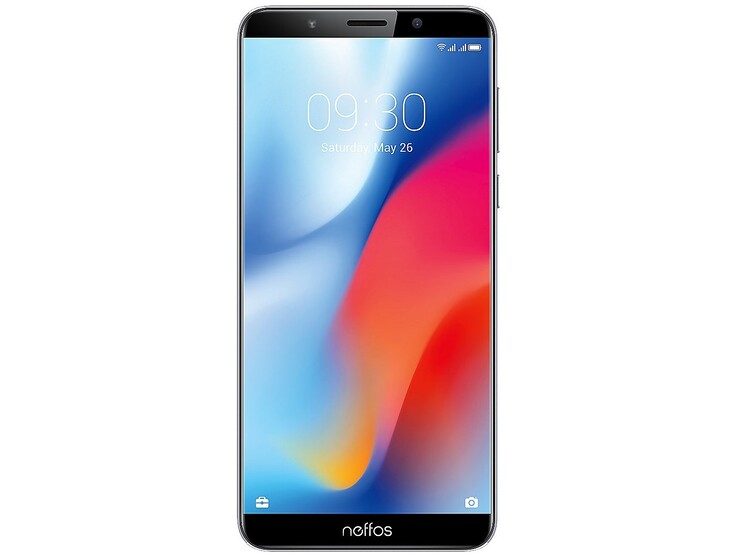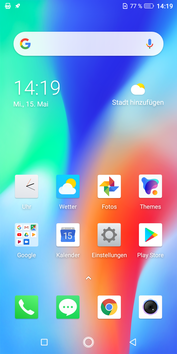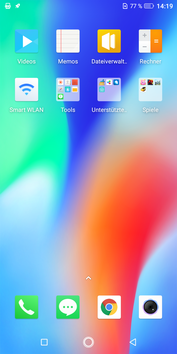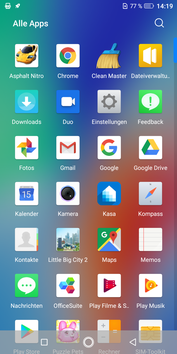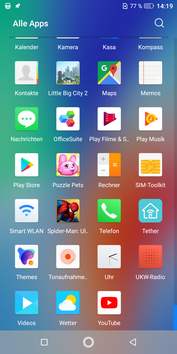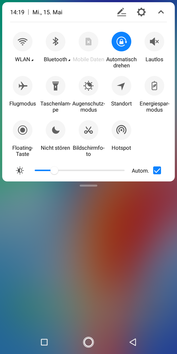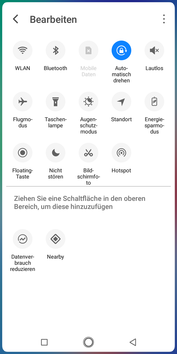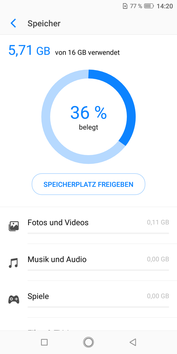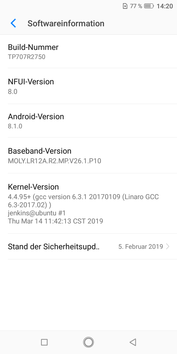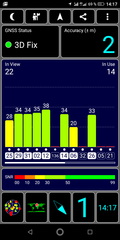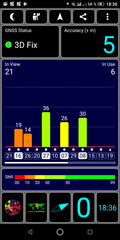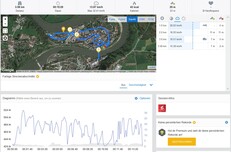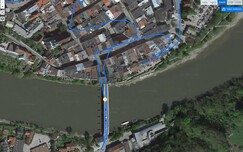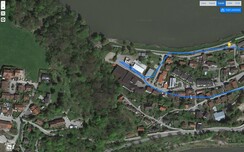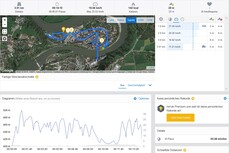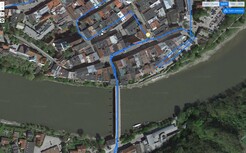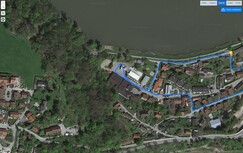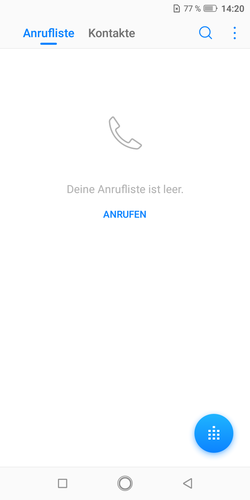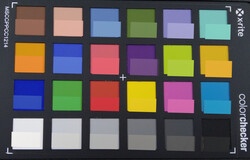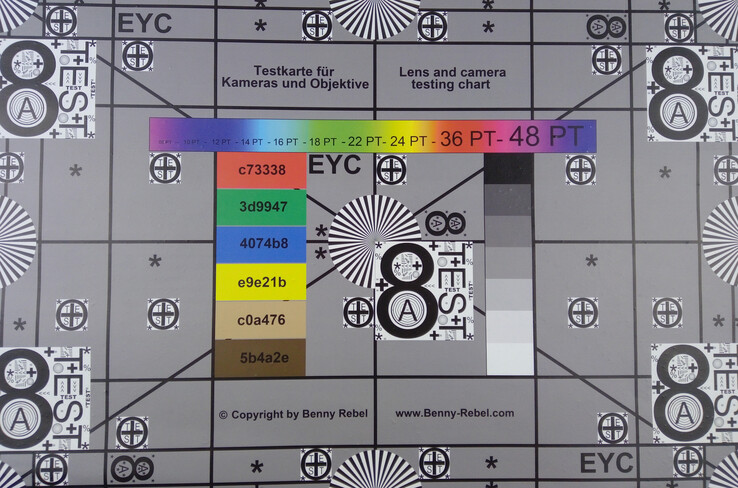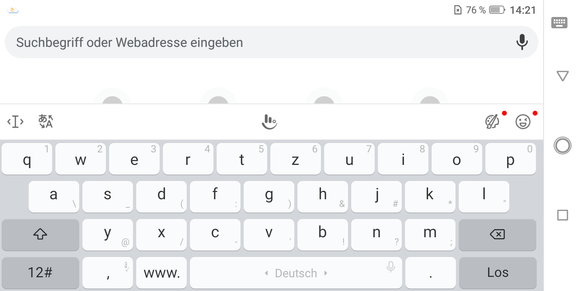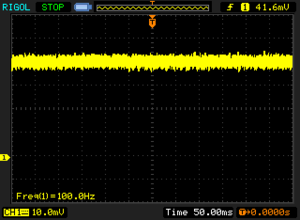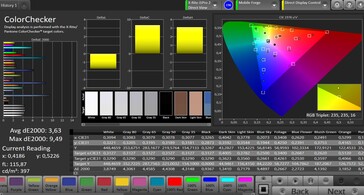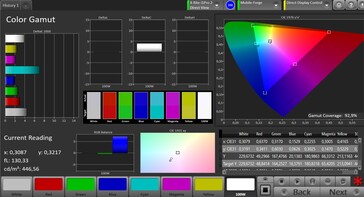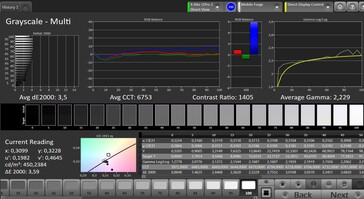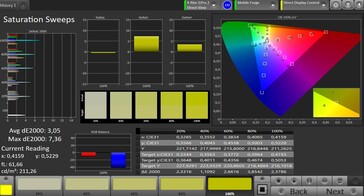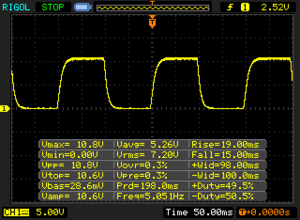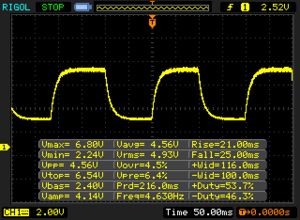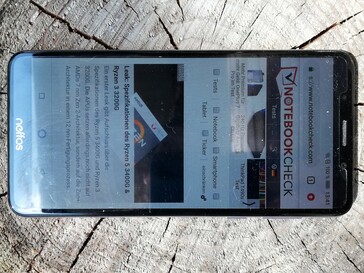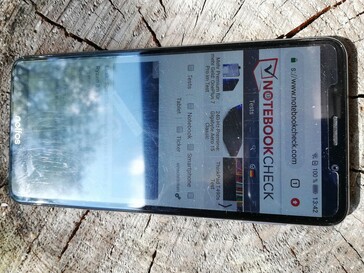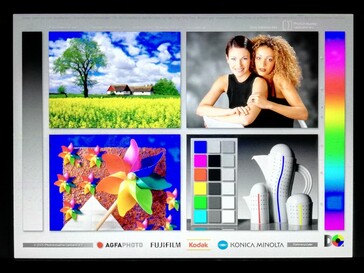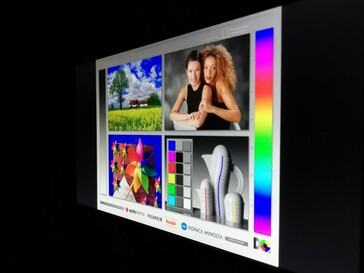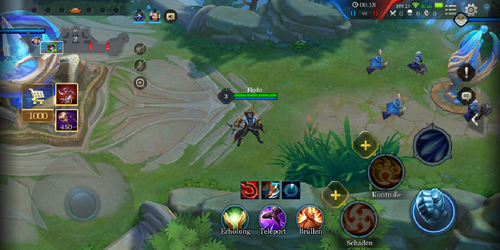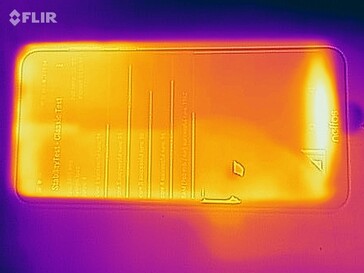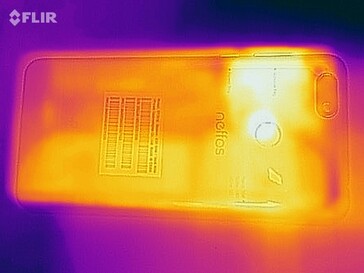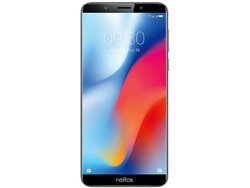TP-Link Neffos C9 Smartphone Review
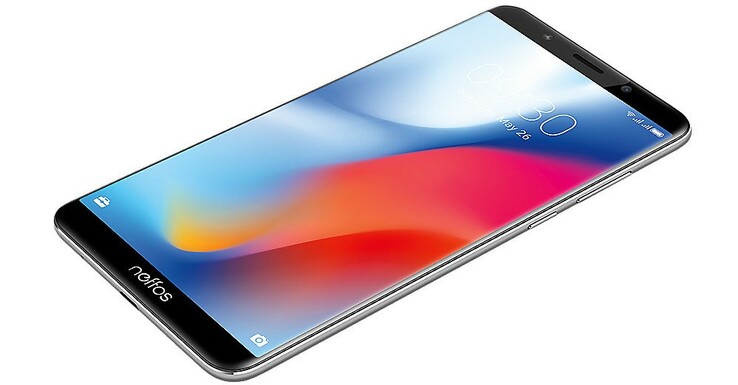
TP-Link released eight smartphones in 2018 alone under its Neffos brand. One of these was the Neffos C9, which has now found its way into our offices. Its biggest selling point is its 5.99-inch IPS display that operates at 1,440x720 with a pixel density of 269 DPI. Additionally, TP-Link charges just €150 (~$167) for the Neffos C9, which it has also equipped with an unusually large 3,840 mAh battery. We will compare the Neffos C9 against other large budget smartphones. Our comparison devices will include the Gigaset GS100, Motorola Moto G7 Play, Nokia 2.1 and the Wiko View 2 Go.
Read on to find out how this MediaTek MT6739 powered device performs against our comparison devices, especially considering that it only has 2 GB of RAM and 16 GB of flash storage. TP-Link promises that the Neffos C9 supports facial recognition and can take beautiful looking selfies, but we are sceptical about both considering that it is a budget device. Our tests will reveal how true TP-Link’s claims are.
Case
TP-Link markets the Neffos C9 as having a FullView display. We are not dealing with a device that has a high screen-to-body ratio here. The C9 has sizeable display bezels, which measure 10 mm (~0.4 in) on the top and bottom, and 2 mm (~0.08 in) on the sides. The device has no notch, but it does have the Neffos branding on the bottom bezel. TP-Link also adorns the back case with the same branding and the company logo, just in case you forget what device you are holding. The C9 comes in either light or dark grey. The latter is our review unit, which has black display bezels. By contrast, TP-Link uses white bezels for the light grey version.
The C9 measures 158.7 x 76.6 x 8.45 mm (~6.25 x 3 x 0.33 in) and weighs 170 g (~6 oz), which makes it larger than most of our comparison devices. Our review unit is surprisingly sturdy though, despite its metal effect plastic body and the unspecified glass protecting its display. TP-Link includes a case and a glass screen protector in the box, which should help improve the device’s durability.
Disappointingly, the battery in the C9 is not replaceable unlike predecessors such as the Neffos C5. Replacing the battery in the C9 requires disassembling the device, for which you will need specialist tools. You will also void your warranty if you do so.
Inexplicably, the rear-facing camera housing protrudes from the back case, which makes the C9 wobble about on flat surfaces. The raised housing, which has a silver lip around it, at least protects the camera glass from scratching. The included case hides the camera bump though, which stops the C9 from wobbling about. TP-Link has extended the silver finishing to the device’s fingerprint scanner too, giving the C9 a somewhat stylish look.
Connectivity
As mentioned earlier, TP-Link has equipped the C9 with a MediaTek MT6739 SoC, which integrates four ARM Cortex-A53 cores and a PowerVR GE8100 GPU. The former clocks up to 1.5 GHz across all cores, while the latter can reach a maximum of 570 MHz. There is also 16 GB of internal storage, of which about 11 GB is available upon first booting the device. The storage is rather slow and makes the UI feel sluggish, something which is not helped by the old SoC and only having 2 GB of RAM. The latter is common for budget devices though.
The C9 has a micro-USB port, which OEMs seem to be taking their time over replacing with USB Type-C for their budget smartphones. The device also has two SIM card slots along with one for microSD cards, meaning that you do not need to choose between dual-SIM functionality and microSD card expansion as other OEMs force people to do with the inclusion of hybrid SIM card slots. The device supports up to 128 GB microSD cards, but we could only format cards as external storage. Worse still, we could not store apps or data on any of our test microSD cards.
The C9 has a headphone jack, and a notification LED too, although it does not support NFC. Hence, you cannot use the device with services such as Google Pay, for example.
Software
At the time of testing TP-Link ships the C9 with NFUI 8.0, which it bases on Android 8.1 Oreo. Our review unit had February 2019 security patch updates installed by the end of April, for reference.
The default launcher in NFUI 8.0 has numerous options for customising how it operates. You can enable notification badges for individual app icons, change themes and use alternative icon packages. Oddly, the latter only works with TP-Link supplied icons and will not work with third-party icon packs. You must switch to an alternate launcher if you want to use those.
The UI also has a so-called eye protection mode, which reduces the blue light that the display emits during specific times of the day. There is an app cloner too, which allows you to have two installations of the same app. This is useful for apps such as WhatsApp, which only allows you to be signed into one account at a time by default. Cloning the app then means that you can be signed into WhatsApp with two accounts simultaneously.
The C9 also comes with plenty of bloatware pre-installed. Some apps such as Clean Master by Cheetah Mobile can be uninstalled, but others such as the TouchPal emoji keyboard cannot even be deactivated. The inability to remove or stop the latter from running is especially annoying since it regularly displays notifications and advertisements.
You can set up multiple accounts too should you wish to do so. We should also mention that TP-Link bases NFUI on Android Open Source Project (AOSP).
Communication & GPS
The C9 supports LTE Cat. 4 downloads and Cat. 5 uploads along with LTE bands 1, 3, 5, 7, 8 and 20. The device can also operate at up to IEEE 802.11 n Wi-Fi speeds, but it is a shame that TP-Link chose not to equip the device with a modem that supported the faster 802.11 ac standard, which you may have seen referred to as Wi-Fi 5 elsewhere. Our review unit maintained decent mobile network signal during our tests with it connected to the Vodafone network in Berlin.
The C9 averaged around 60 MBit/s in our iperf3 Client Wi-Fi tests, which we conducted with our reference Linksys EA8500 router. This will be fast enough for most internet connections, although the Gigaset GS100 offers closer to 100 MBit/s, which some residential Wi-Fi networks can now reach. However, all devices in our comparison table are well below the class average here.
| Networking | |
| iperf3 transmit AX12 | |
| Gigaset GS100 | |
| Wiko View 2 Go | |
| TP-Link Neffos C9 | |
| Nokia 2.1 | |
| Motorola Moto G7 Play | |
| iperf3 receive AX12 | |
| Average of class Smartphone (last 2 years) | |
| Gigaset GS100 | |
| TP-Link Neffos C9 | |
| Wiko View 2 Go | |
| Nokia 2.1 | |
| Motorola Moto G7 Play | |
Our review unit can locate us indoors, but only with an accuracy of up to five metres (~16 ft), and only when we are stood next to a window. The C9 takes a few seconds to find a satellite fix outdoors, but it is accurate to two metres (~6.6 ft) when it does find one.
However, we would recommend using a different device for turn-by-turn navigation as the C9 performed woefully in our sample bike ride. Our test device struggled to keep up with us when cycling in built-up areas and often took huge shortcuts to do so. The C9 plotted approximately a 9% shorter route than our trusty Garmin Edge 520, but we would not trust our review unit to give us accurate directions.
Telephone Functions & Call Quality
The C9 comes with a TP-Link phone app, which looks and functions like most alternatives. The app separates call history and contacts into two tabs, which are accessible at the top of the screen. There is a search functionality too, and a dedicated settings menu. You can also blacklist numbers among other useful features, although you must install a third-party app to use SIP services, which is disappointing.
Our test device has underwhelming call quality. We experienced no disturbing noises during our test calls, but the device could not always filter out background noise, for some reason. Moreover, wind noise masks our voice to the point where we sound unintelligible. We also occasionally had some calls that failed to connect despite having enough signal.
The included headphones filter out background noise better than the built-in microphone does, but voices sounded much duller than when making a call over the earpiece. We should also point out that the earpieces are made from hard plastic, which we found difficult to sit correctly in our ears. Ambient noise often passes through the gaps between our ears and the earbuds, which made it harder to listen to our call partner.
Using the loudspeaker is not a great experience either. The speaker loudly reproduced our call partner’s voice during our tests, but the microphone struggled to pick out our voice unless we were speaking from a quiet environment. Consequently, background and wind noise will obscure your voice if you are using the speakerphone.
The C9 technically supports voice over LTE (VoLTE). However, your carrier must provision the device on its network before the functionality will work.
Cameras
The C9 has two cameras, an 8 MP front-facing one and a 13 MP rear-facing one. The former takes passable selfies, but our test photos often look blurry. The edges of objects and fine structures are not always clearly separated either. Likewise, colours generally look too dark for our liking. The default camera app has a HDR mode and a beauty mode, the latter of which gives objects a slight blur to smooth out any uneven surfaces. Perhaps unsurprisingly, the C9 does not take beautiful selfies like TP-Link claimed it would.
The rear-facing camera does not do much better either, even in good ambient light. Objects in focus look slightly blurred, and most photos are overly washed out. The sensor has a propensity to underexpose scenes too. Colours look more vivid in macro shots, while fine lines and structures are separated well. The camera performed better in low-light conditions than we expected, but objects are still dominated by image noise and colours are strikingly inaccurate.
The default camera app lends its HDR and beauty modes also to the rear-facing camera. There is a professional mode too though, which contains options for granularly adjusting the exposure, focus, ISO, shutter speed, and white balance. You can also change the brightness, contrast, hue, and saturation should you wish to do so.
The C9 records acceptable looking videos, but it lacks any form of image stabilisation. Correspondingly, videos will often look blurry unless you have a steady hand or a gimbal. The default camera app only offers customisations for the resolution, which you can switch between 480p, 720p and 1080p.
We also subjected our review unit to further camera tests under controlled lighting conditions. The C9 reproduces the colour yellow accurately, but all other colours are noticeably darker than the ColorChecker reference colours.
The rear-facing camera does an admirable job of capturing our test chart though. Fine details and structures are recognisable, while colours stand out well from the mostly grey chart. Contrast levels drop off in all corners of the image though, which is disappointing.
Accessories & Warranty
TP-Link includes several accessories with the C9. Our test device arrived with a charger and a corresponding micro USB cable, a silicone case as well as a pair of headphones. The manufacturer does not currently sell any C9 specific accessories on its website though.
The C9 comes with 24 months limited manufacturer’s warranty. Please see our Guarantees, Return Policies and Warranties FAQ for country-specific information.
Input Devices & Operation
As we mentioned earlier, TP-Link pre-installs TouchPal as the default keyboard app. The app worked well during our tests and offers numerous customisation options, but it is disappointing that TP-Link prevents the app from being disabled or uninstalled. You can download and use a third-party keyboard app should you prefer, but TouchPal may still display notifications and adverts.
The touch screen in our review unit worked well during our tests. The pre-applied screen protector has a highly resistive finish though, which makes multi-finger gesture such as drag-and-drop movements difficult to perform. Removing the screen protector or replacing it with a third-party glass one would alleviate this issue.
The C9 has a fingerprint scanner, although it is not a particularly good one. Our review unit takes a moment or two to recognise our fingerprints if it does at all. Likewise, the facial recognition software is insecure. The device uses the front-facing camera for authentication that only captures a 2D image of your face, which makes it easy to spoof with a print-out, for example.
Display
As we mentioned at the start of this review, the C9 has a 5.99-inch IPS display that operates at 720p. The one in our test device reached an average maximum brightness of 442 cd/m² according to X-Rite i1Pro 2 and is 86% evenly lit. These values put the C9 in the midfield of our comparison devices.
Unfortunately, the C9 uses pulse-width modulation (PWM) to adjust display brightness. This looks like flickering to human eyes and can cause health issues such as eye strain and headaches. The display in our test device flickers at 100 Hz when set to 20% brightness and below, which is low enough to cause adverse effects for those who are PWM sensitive.
| |||||||||||||||||||||||||
Brightness Distribution: 86 %
Center on Battery: 447 cd/m²
Contrast: 745:1 (Black: 0.6 cd/m²)
ΔE Color 3.63 | 0.5-29.43 Ø5
ΔE Greyscale 3.5 | 0.57-98 Ø5.3
92.9% sRGB (Calman 2D)
Gamma: 2.229
| TP-Link Neffos C9 IPS, 1440x720, 5.99 | Motorola Moto G7 Play IPS, 1512x720, 5.70 | Wiko View 2 Go IPS, 1512x720, 5.93 | Nokia 2.1 IPS, 1280x720, 5.50 | Gigaset GS100 IPS, 1440x720, 5.50 | |
|---|---|---|---|---|---|
| Screen | 2% | 13% | -8% | -34% | |
| Brightness middle | 447 | 479 7% | 465 4% | 338 -24% | 442 -1% |
| Brightness | 442 | 481 9% | 462 5% | 327 -26% | 446 1% |
| Brightness Distribution | 86 | 94 9% | 84 -2% | 82 -5% | 86 0% |
| Black Level * | 0.6 | 0.37 38% | 0.32 47% | 0.27 55% | 0.35 42% |
| Contrast | 745 | 1295 74% | 1453 95% | 1252 68% | 1263 70% |
| Colorchecker dE 2000 * | 3.63 | 4.91 -35% | 4.76 -31% | 5.36 -48% | 8.03 -121% |
| Colorchecker dE 2000 max. * | 9.49 | 9.47 -0% | 7.71 19% | 9.77 -3% | 15.81 -67% |
| Greyscale dE 2000 * | 3.5 | 6.4 -83% | 4.6 -31% | 6.2 -77% | 10.4 -197% |
| Gamma | 2.229 99% | 2.108 104% | 2.674 82% | 2.345 94% | 2.02 109% |
| CCT | 6753 96% | 7292 89% | 6806 96% | 8460 77% | 10070 65% |
* ... smaller is better
Screen Flickering / PWM (Pulse-Width Modulation)
| Screen flickering / PWM detected | 100 Hz | ≤ 20 % brightness setting | |
The display backlight flickers at 100 Hz (worst case, e.g., utilizing PWM) Flickering detected at a brightness setting of 20 % and below. There should be no flickering or PWM above this brightness setting. The frequency of 100 Hz is very low, so the flickering may cause eyestrain and headaches after extended use. In comparison: 53 % of all tested devices do not use PWM to dim the display. If PWM was detected, an average of 17900 (minimum: 5 - maximum: 3846000) Hz was measured. | |||
The display also has a comparatively high black value, which we measure at 0.6 cd/m². The high black value results in an underwhelmingly low 745:1 contrast ratio and gives colours a grey haze. In short, colours will look more vibrant on our comparison devices than they do on the C9.
CalMAN analysis also shows that the display has a slight blue tint to it. We were able to reduce this by enabling the eye protection mode, which is freely adjustable. NFUI 8.0 does not include any colour modes or white balance options though.
Display Response Times
| ↔ Response Time Black to White | ||
|---|---|---|
| 34 ms ... rise ↗ and fall ↘ combined | ↗ 19 ms rise | |
| ↘ 15 ms fall | ||
| The screen shows slow response rates in our tests and will be unsatisfactory for gamers. In comparison, all tested devices range from 0.1 (minimum) to 240 (maximum) ms. » 89 % of all devices are better. This means that the measured response time is worse than the average of all tested devices (21.5 ms). | ||
| ↔ Response Time 50% Grey to 80% Grey | ||
| 46 ms ... rise ↗ and fall ↘ combined | ↗ 21 ms rise | |
| ↘ 25 ms fall | ||
| The screen shows slow response rates in our tests and will be unsatisfactory for gamers. In comparison, all tested devices range from 0.2 (minimum) to 636 (maximum) ms. » 76 % of all devices are better. This means that the measured response time is worse than the average of all tested devices (33.7 ms). | ||
Performance
The C9 has typical hardware for an entry-level smartphone. Its MediaTek MT6739 SoC and 2 GB of RAM are just about powerful enough for the system to run smoothly, but you will notice some slowdowns and lags if you have several apps open at once. Its PowerVR GE8100 GPU and 16 GB of eMMC flash storage are not much to write home about either. In short, the C9 is only suitable for running simple applications or tasks such as Facebook, WhatsApp and browsing the internet.
Our review unit generally finished in the midfield of our comparison devices in synthetic benchmarks. The C9 typically scores more than what we would have expected from a MediaTek MT6739 powered device though.
| GFXBench 3.0 | |
| on screen Manhattan Onscreen OGL (sort by value) | |
| TP-Link Neffos C9 | |
| Motorola Moto G7 Play | |
| Wiko View 2 Go | |
| Nokia 2.1 | |
| Gigaset GS100 | |
| Average Mediatek MT6739 (4.4 - 10, n=16) | |
| Average of class Smartphone (6.8 - 165, n=185, last 2 years) | |
| 1920x1080 1080p Manhattan Offscreen (sort by value) | |
| TP-Link Neffos C9 | |
| Motorola Moto G7 Play | |
| Wiko View 2 Go | |
| Nokia 2.1 | |
| Average Mediatek MT6739 (2.2 - 2.8, n=14) | |
| Average of class Smartphone (9.2 - 363, n=185, last 2 years) | |
| GFXBench 3.1 | |
| on screen Manhattan ES 3.1 Onscreen (sort by value) | |
| TP-Link Neffos C9 | |
| Motorola Moto G7 Play | |
| Wiko View 2 Go | |
| Nokia 2.1 | |
| Gigaset GS100 | |
| Average Mediatek MT6739 (2.6 - 6.7, n=16) | |
| Average of class Smartphone (3.7 - 158, n=185, last 2 years) | |
| 1920x1080 Manhattan ES 3.1 Offscreen (sort by value) | |
| TP-Link Neffos C9 | |
| Motorola Moto G7 Play | |
| Wiko View 2 Go | |
| Nokia 2.1 | |
| Gigaset GS100 | |
| Average Mediatek MT6739 (1.3 - 1.7, n=16) | |
| Average of class Smartphone (6.2 - 279, n=185, last 2 years) | |
The C9 also finished middle of the road in our browser benchmark comparison tables. In everyday life, the browser opens with a very short delay and websites are set up quickly. However, media content takes a moment to load.
| JetStream 1.1 - Total Score | |
| Average of class Smartphone (last 2 years) | |
| Motorola Moto G7 Play | |
| Wiko View 2 Go (Chrome 71) | |
| TP-Link Neffos C9 (Chrome 73) | |
| Average Mediatek MT6739 (13.4 - 18.5, n=14) | |
| Nokia 2.1 (Chrome 70) | |
| Gigaset GS100 (Chrome 68) | |
| Octane V2 - Total Score | |
| Average of class Smartphone (4633 - 89112, n=213, last 2 years) | |
| Motorola Moto G7 Play | |
| TP-Link Neffos C9 (Chrome 73) | |
| Wiko View 2 Go (Chrome 71) | |
| Average Mediatek MT6739 (2093 - 3386, n=15) | |
| Nokia 2.1 (Chrome 70) | |
| Gigaset GS100 (Chrome 68) | |
| Mozilla Kraken 1.1 - Total | |
| Average Mediatek MT6739 (13599 - 18154, n=16) | |
| Gigaset GS100 (Chrome 68) | |
| Nokia 2.1 (Chrome 70) | |
| TP-Link Neffos C9 (Chrome 73) | |
| Wiko View 2 Go (Chrome 71) | |
| Motorola Moto G7 Play | |
| Average of class Smartphone (388 - 9999, n=173, last 2 years) | |
| WebXPRT 3 - Overall | |
| Average of class Smartphone (39 - 304, n=122, last 2 years) | |
| TP-Link Neffos C9 (Chrome 73) | |
| Average Mediatek MT6739 (23 - 27, n=2) | |
* ... smaller is better
The C9 also finished in the midfield of our AndroBench comparison table. The device has considerably slower storage than that of the Moto G7 Play but consistently beats the Gigaset GS100.
We typically test the speed of microSD card readers with our Toshiba Exceria Pro M501 reference card. However, our review unit could not read the card for some reason, which forced us to use a 32 GB Kingston card instead. Regardless, the reader in the C9 is woefully slow and achieved around 6x slower transfer speeds than our comparison devices did.
| TP-Link Neffos C9 | Motorola Moto G7 Play | Nokia 2.1 | Gigaset GS100 | Average 16 GB eMMC Flash | Average of class Smartphone | |
|---|---|---|---|---|---|---|
| AndroBench 3-5 | 270% | 154% | 109% | 68% | 1276% | |
| Sequential Read 256KB | 266.1 | 289 9% | 288.3 8% | 97.2 -63% | 164.5 ? -38% | 1508 ? 467% |
| Sequential Write 256KB | 50.8 | 111 119% | 51.2 1% | 24 -53% | 43 ? -15% | 1118 ? 2101% |
| Random Read 4KB | 41.7 | 74 77% | 50.5 21% | 17.6 -58% | 21.7 ? -48% | 247 ? 492% |
| Random Write 4KB | 12.7 | 73 475% | 13.45 6% | 6.2 -51% | 8.08 ? -36% | 272 ? 2042% |
| Sequential Read 256KB SDCard | 18.3 ? | 84.7 ? 363% | 79.4 ? 334% | 79.5 ? 334% | 59.1 ? 223% | |
| Sequential Write 256KB SDCard | 9.5 ? | 64.1 ? 575% | 61.9 ? 552% | 61 ? 542% | 39.8 ? 319% |
Games
The PowerVR GE8100 is powerful enough to play simple and older games, but that is about it. "Arena of Valor" runs smoothly, but complex titles such as "PUBG Mobile" are unplayable if you can even install them.
The touchscreen worked well throughout our gaming tests though. Unfortunately, the accelerometer takes a moment or two to react. Moreover, the pre-applied screen protector and its highly resistive finish quickly make performing swiping gestures a chore in games such as "Temple Run 2".
Emissions
Temperature
Surface temperatures reach a maximum of 27 °C (~81 °F) at idle and 36.6 °C (~98 °F) under sustained load. Our review unit often feels warm to the touch, but it never gets too hot to hold.
(+) The maximum temperature on the upper side is 35.5 °C / 96 F, compared to the average of 35 °C / 95 F, ranging from 21.9 to 56 °C for the class Smartphone.
(+) The bottom heats up to a maximum of 36.6 °C / 98 F, compared to the average of 33.8 °C / 93 F
(+) In idle usage, the average temperature for the upper side is 25.9 °C / 79 F, compared to the device average of 32.7 °C / 91 F.
Speakers
The C9 does not have a dedicated speaker. Instead, it uses its earpiece, which gets unexpectedly loud. The audio produced by the earpiece sounds surprisingly balanced too. In short, the C9 is suited for occasionally listening to media content, but we would recommend using external speakers or headphones as these will deliver a better listening experience.
The 3.5 mm jack in our review unit grips headphone jacks tightly and outputs audio cleanly. We had no problems with Bluetooth audio either.
TP-Link Neffos C9 audio analysis
(+) | speakers can play relatively loud (82 dB)
Bass 100 - 315 Hz
(-) | nearly no bass - on average 33.7% lower than median
(+) | bass is linear (6.2% delta to prev. frequency)
Mids 400 - 2000 Hz
(±) | higher mids - on average 7.5% higher than median
(±) | linearity of mids is average (9.1% delta to prev. frequency)
Highs 2 - 16 kHz
(+) | balanced highs - only 2.9% away from median
(+) | highs are linear (4.6% delta to prev. frequency)
Overall 100 - 16.000 Hz
(±) | linearity of overall sound is average (27.6% difference to median)
Compared to same class
» 67% of all tested devices in this class were better, 5% similar, 27% worse
» The best had a delta of 12%, average was 38%, worst was 134%
Compared to all devices tested
» 81% of all tested devices were better, 4% similar, 15% worse
» The best had a delta of 4%, average was 25%, worst was 134%
Motorola Moto G7 Play audio analysis
(±) | speaker loudness is average but good (81.1 dB)
Bass 100 - 315 Hz
(-) | nearly no bass - on average 64.4% lower than median
(+) | bass is linear (0% delta to prev. frequency)
Mids 400 - 2000 Hz
(-) | nearly no mids - on average 64.4% lower than median
(+) | mids are linear (0% delta to prev. frequency)
Highs 2 - 16 kHz
(-) | nearly no highs - on average 64.4% lower than median
(+) | highs are linear (0% delta to prev. frequency)
Overall 100 - 16.000 Hz
(-) | overall sound is not linear (116.4% difference to median)
Compared to same class
» 85% of all tested devices in this class were better, 6% similar, 9% worse
» The best had a delta of 12%, average was 38%, worst was 134%
Compared to all devices tested
» 95% of all tested devices were better, 2% similar, 3% worse
» The best had a delta of 4%, average was 25%, worst was 134%
Power Management
Power Consumption
Our tests certify that the C9 consumes at least 1.5 W at idle and a maximum of 5.2 W under load. Our test unit consumes more than our comparison devices overall, but slightly less than what we would have expected from a MediaTek MT6739 powered device.
TP-Link includes a 5-W charger in the box. The charger takes about three and a half hours to fully recharge our test device. It is only just about powerful enough to recharge the C9 under load too; we would have preferred TP-Link to have included a more powerful charger.
| Off / Standby | |
| Idle | |
| Load |
|
| TP-Link Neffos C9 3840 mAh | Motorola Moto G7 Play 3000 mAh | Wiko View 2 Go 4000 mAh | Nokia 2.1 4000 mAh | Gigaset GS100 3000 mAh | Average Mediatek MT6739 | Average of class Smartphone | |
|---|---|---|---|---|---|---|---|
| Power Consumption | 8% | 17% | 32% | 1% | -6% | 4% | |
| Idle Minimum * | 1.5 | 1 33% | 0.8 47% | 0.7 53% | 1.3 13% | 1.522 ? -1% | 0.897 ? 40% |
| Idle Average * | 2.2 | 1.7 23% | 2 9% | 1.2 45% | 2.1 5% | 2.17 ? 1% | 1.452 ? 34% |
| Idle Maximum * | 2.9 | 2.6 10% | 2.3 21% | 1.9 34% | 2.9 -0% | 2.86 ? 1% | 1.629 ? 44% |
| Load Average * | 4 | 4.1 -3% | 3.6 10% | 3.2 20% | 4.4 -10% | 4.73 ? -18% | 5.55 ? -39% |
| Load Maximum * | 5.2 | 6.5 -25% | 5.4 -4% | 4.8 8% | 5.3 -2% | 5.99 ? -15% | 8.31 ? -60% |
* ... smaller is better
Battery Life
The C9 has a 3,840 mAh battery, which is 840 mAh larger than the ones in the Moto G7 Play and the GS100. By contrast, the Nokia 2.1 and Wiko View 2 Go both have 4,000 mAh batteries.
Our review unit lasted 9:28 hours in our practical Wi-Fi battery life test, which falls far short of all but the GS100 of our comparison devices. In short, the C9 has underwhelming battery life, but it should still get you through a full working day.
| TP-Link Neffos C9 3840 mAh | Motorola Moto G7 Play 3000 mAh | Wiko View 2 Go 4000 mAh | Nokia 2.1 4000 mAh | Gigaset GS100 3000 mAh | |
|---|---|---|---|---|---|
| Battery Runtime | |||||
| WiFi v1.3 | 568 | 690 21% | 734 29% | 809 42% | 532 -6% |
Pros
Cons
Verdict
The TP-Link Neffos C9 is a curious budget smartphone. Its large display and outdated hardware still make it good enough for everyday applications and tasks such as using social media and browsing the internet. However, our review unit regularly feels more sluggish than its contemporaries, and it does not help itself either with its comparatively short battery life.
The TP-Link Neffos C9 will appeal to those who are after a budget smartphone with a large display. You must put up with the languid performance and uninspiring battery life though.
The ability to have two SIM cards and a microSD card installed simultaneously is something that not all budget devices offer, but this is a minor plus point. In short, the Neffos C9 does not distinguish itself from other budget smartphones. It does not do a lot well and frustrates in many areas.
TP-Link Neffos C9
-
05/20/2019 v6(old)
Mike Wobker, Eric Ferrari-Herrmann


 Deutsch
Deutsch English
English Español
Español Français
Français Italiano
Italiano Nederlands
Nederlands Polski
Polski Português
Português Русский
Русский Türkçe
Türkçe Svenska
Svenska Chinese
Chinese Magyar
Magyar